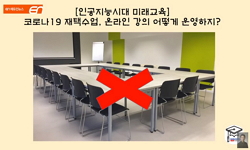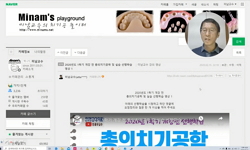2019년 12월 코로나 19가 발생하였고 전 세계로 확산되었다. 최근 몇 년 간 전염력이 높은 호흡기 감염병의 출현이 증가함에 따라 감염병 대응시설에서의 감염 경로 파악과 코로나 19의 확산 저...
http://chineseinput.net/에서 pinyin(병음)방식으로 중국어를 변환할 수 있습니다.
변환된 중국어를 복사하여 사용하시면 됩니다.
- 中文 을 입력하시려면 zhongwen을 입력하시고 space를누르시면됩니다.
- 北京 을 입력하시려면 beijing을 입력하시고 space를 누르시면 됩니다.
감염병 대응시설에서의 호흡기 감염병 확산 저감을 위한 연구 = Analysis for Reducing the Spread of Respiratory Infectious Disease in Infectious Disease Response Facilities
한글로보기https://www.riss.kr/link?id=T16657999
- 저자
-
발행사항
성남 : 가천대학교 일반대학원, 2023
-
학위논문사항
학위논문(박사) -- 가천대학교 일반대학원 , 설비소방공학과 , 2023. 2
-
발행연도
2023
-
작성언어
한국어
- 주제어
-
발행국(도시)
경기도
-
형태사항
26 cm
-
일반주기명
지도교수: 홍진관
-
UCI식별코드
I804:41005-200000659393
- 소장기관
-
0
상세조회 -
0
다운로드
부가정보
국문 초록 (Abstract)
해석 결과를 종합하였을 때 공기 중에 부유하고 있는 50 µm 미만의 비말에 의한 공기감염이 발생할 수 있을 것으로 예상된다. 날씨와 바람에 따라 2 m보다 더 길게 거리두기 기준을 설정하는 것에 대한 추가적인 검토도 필요할 것으로 판단된다. 또한 전파력이 높은 변이바이러스가 계속해서 출현함에 따라 실외에서도 밀집도가 높은 경우 마스크 착용이 권고된다. 코로나 19 진단 검사를 위해 비인두도말물 검체 채취 시 코 밑으로 마스크를 착용하는 것이 감염확산 저감에 효과적이며, 마스크를 착용하지 않는 경우 교차오염과 교차감염 방지를 위해 선별진료소의 적절한 환경소독이 이루어져야 한다. 병원과 같이 밀집된 환경에서 감염환자 발생 시 공기감염의 가능성을 고려한 방역 대책 수립이 필요할 것으로 보인다.
2019년 12월 코로나 19가 발생하였고 전 세계로 확산되었다. 최근 몇 년 간 전염력이 높은 호흡기 감염병의 출현이 증가함에 따라 감염병 대응시설에서의 감염 경로 파악과 코로나 19의 확산 저감을 위한 연구의 필요성이 강조되고 있다. 따라서 본 연구는 전산유체역학(Computational Fluid Dynamics, CFD)을 이용하여 입자 확산 해석을 통해 감염병 대응시설에서의 감염 확산 저감을 위한 방안을 제시하고자 하였다. 먼저 감염환자로부터 배출된 입자의 확산 특성을 알아보기 위해 사회적 거리두기 기준인 2 m 간격을 두고 두 사람이 서있는 경우 입자의 이동과 침적 양상에 대해 알아보았다. 다음으로 코로나 19 대응시설의 중심인 선별진료소에서의 감염 입자 해석을 진행하였다. 의료진과 피검사자 간의 교차감염 방지를 위해 검사대를 설치한 음압컨테이너 선별진료소 모델을 제시하였고, 검사대의 적절한 배기량과 이에 따른 실간 압력차를 알아보았다. 또한 워크스루 선별진료소에서의 입자 해석을 진행하였다. 개방형 워크스루부스에서 코로나 19 검사 시 교차오염과 교차 감염의 가능성을 알아보았고, 마스크 착용에 따른 입자 확산 저감 효과에 대해 알아보았다. 마지막으로 병원 내 공기 감염의 가능성을 알아보았다. 2015년 평택에서 발생한 병원 내 MERS 집단감염 사례를 바탕으로 호흡입자와 기침입자의 확산을 비교하였다. 또한 각 실의 입자 확산율과 실제 감염환자 발생률을 비교하여 입자 확산 모델을 검증하였다.
해석 결과를 종합하였을 때 공기 중에 부유하고 있는 50 µm 미만의 비말에 의한 공기감염이 발생할 수 있을 것으로 예상된다. 날씨와 바람에 따라 2 m보다 더 길게 거리두기 기준을 설정하는 것에 대한 추가적인 검토도 필요할 것으로 판단된다. 또한 전파력이 높은 변이바이러스가 계속해서 출현함에 따라 실외에서도 밀집도가 높은 경우 마스크 착용이 권고된다. 코로나 19 진단 검사를 위해 비인두도말물 검체 채취 시 코 밑으로 마스크를 착용하는 것이 감염확산 저감에 효과적이며, 마스크를 착용하지 않는 경우 교차오염과 교차감염 방지를 위해 선별진료소의 적절한 환경소독이 이루어져야 한다. 병원과 같이 밀집된 환경에서 감염환자 발생 시 공기감염의 가능성을 고려한 방역 대책 수립이 필요할 것으로 보인다.
다국어 초록 (Multilingual Abstract)
First, the dispersion and deposition patterns of droplets were simulated to analyze the dispersion characteristics of droplets expelled from an infected person when two people stood 2 m apart (the standard for social distancing). Secondly, the droplet dispersion of the screening centers, used for testing for COVID-19 infection, was simulated. A negative pressure container with a sample collection booth to prevent cross-infection was proposed, and CFD simulation was conducted to determine the minimum ventilation required for the sample collection booth, and the corresponding pressure difference between a medical examination room and sample collection room. The simulation of droplet dispersion and deposition at a walk-through screening center, which provides rapid large-scale testing whilst reducing the risk of infection to healthcare workers, was performed. The potential for cross-contamination and cross-infection was studied when conducting a COVID-19 test at a walk-through booth, and the effect of reducing droplet dispersion through the use of masks was examined. Finally, the infection routes within a hospital, which is the initiation of community-acquired COVID-19, were examined. Exhaled breath and cough particles were assumed and compared in terms of particle dispersion in Pyeongtaek St. Mary’s Hospital, where the first MERS-infected patient in Korea was admitted in 2015. Moreover, the model was validated by comparing the actual incidence of infected patients and particle dispersion rate in each ward.
Based on the results of the studies, it is speculated that airborne infections may occur due to suspension of droplets less than 50 µm in the air. Based on environmental conditions, such as wind, relative humidity, and temperature, a two meter social distancing policy may not be sufficient. Further, maintaining social distancing and wearing a mask both indoors and outdoors in busy areas is crucial, due to the emergence of a highly transmissible mutant viruses. Additionally, wearing a mask under the nose during nasopharyngeal swab sample collection for a COVID-19 diagnostic test can help reduce the droplet dispersion. Considering the possibility of airborne infection in densely populated environments such as hospitals with infected patients, establishment of quarantine measure is necessary.
After the first case of COVID-19 was identified in December 2019, COVID-19 spread globally over the subsequent months. The occurrence of highly transmissible respiratory infectious diseases has increased in recent years, emphasizing the importance of ...
After the first case of COVID-19 was identified in December 2019, COVID-19 spread globally over the subsequent months. The occurrence of highly transmissible respiratory infectious diseases has increased in recent years, emphasizing the importance of researching transmission in infectious disease response facilities and preventing the spread of COVID-19. To formulate a plan to reduce the spread of infection in an infectious disease response facility, this study used computational fluid dynamics (CFD) to analyze the dispersion of infectious droplets.
First, the dispersion and deposition patterns of droplets were simulated to analyze the dispersion characteristics of droplets expelled from an infected person when two people stood 2 m apart (the standard for social distancing). Secondly, the droplet dispersion of the screening centers, used for testing for COVID-19 infection, was simulated. A negative pressure container with a sample collection booth to prevent cross-infection was proposed, and CFD simulation was conducted to determine the minimum ventilation required for the sample collection booth, and the corresponding pressure difference between a medical examination room and sample collection room. The simulation of droplet dispersion and deposition at a walk-through screening center, which provides rapid large-scale testing whilst reducing the risk of infection to healthcare workers, was performed. The potential for cross-contamination and cross-infection was studied when conducting a COVID-19 test at a walk-through booth, and the effect of reducing droplet dispersion through the use of masks was examined. Finally, the infection routes within a hospital, which is the initiation of community-acquired COVID-19, were examined. Exhaled breath and cough particles were assumed and compared in terms of particle dispersion in Pyeongtaek St. Mary’s Hospital, where the first MERS-infected patient in Korea was admitted in 2015. Moreover, the model was validated by comparing the actual incidence of infected patients and particle dispersion rate in each ward.
Based on the results of the studies, it is speculated that airborne infections may occur due to suspension of droplets less than 50 µm in the air. Based on environmental conditions, such as wind, relative humidity, and temperature, a two meter social distancing policy may not be sufficient. Further, maintaining social distancing and wearing a mask both indoors and outdoors in busy areas is crucial, due to the emergence of a highly transmissible mutant viruses. Additionally, wearing a mask under the nose during nasopharyngeal swab sample collection for a COVID-19 diagnostic test can help reduce the droplet dispersion. Considering the possibility of airborne infection in densely populated environments such as hospitals with infected patients, establishment of quarantine measure is necessary.
목차 (Table of Contents)
- 제 1 장 서 론 1
- 1.1 연구 배경 1
- 1.2 연구 동향 4
- 1.3 연구 내용 및 목적 8
- 제 2 장 연구 방법 11
- 제 1 장 서 론 1
- 1.1 연구 배경 1
- 1.2 연구 동향 4
- 1.3 연구 내용 및 목적 8
- 제 2 장 연구 방법 11
- 2.1 시뮬레이션 모델 11
- 2.1.1 Eulerian Model 12
- 2.1.2 Lagrangian Model 12
- 2.1.3 입자 증발 모델 13
- 2.2 입자 배출 모델 14
- 2.2.1 기침 모델 15
- 2.2.2 재채기 모델 17
- 2.2.3 호흡 모델 18
- 2.2.4 입자 증발 모델 검증 18
- 제 3 장 공기 중 입자의 확산 해석 20
- 3.1 연구 방법 20
- 3.2 해석 결과 20
- 3.2.1 날씨에 따른 입자의 확산 20
- 3.2.2 상대습도에 따른 입자의 확산 28
- 3.3 소결론 31
- 제 4 장 음압컨테이너 선별진료소에서의 감염입자 확산 해석 33
- 4.1 연구 방법 33
- 4.1.1 해석 모델링 33
- 4.1.2 입자 경계조건 35
- 4.2 해석 결과 36
- 4.2.1 검사대가 설치되지 않은 경우 36
- 4.2.2 검사대를 설치한 경우 37
- 4.3 소결론 42
- 제 5 장 워크스루 선별진료소에서의 감염입자 확산 해석 44
- 5.1 연구 방법 44
- 5.1.1 마스크 모델 46
- 5.2 해석 결과 47
- 5.2.1 재채기 입자의 확산 47
- 5.2.2 마스크 착용 시 재채기 입자의 확산 54
- 5.2.3 바람과 마스크 착용 유무에 따른 입자의 확산 59
- 5.3 소결론 61
- 제 6 장 병원 내 감염경로 해석 63
- 6.1 연구 방법 63
- 6.2 해석 결과 67
- 6.2.1 호흡입자의 확산 67
- 6.2.2 기침입자의 확산 69
- 6.2.3 호흡과 기침입자의 비교 73
- 6.3 소결론 77
- 제 7 장 결론 79
- 참고 문헌 82
- Abstract 94













